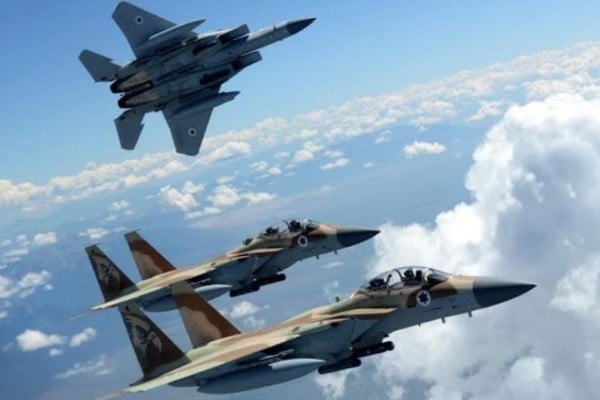The IAF must gather intelligence, select the right ammunition, choice of aerial platforms, and refueling capabilities.
By Yaakov Lappin, JNS
A recently established Iran Unit in the Israeli Air Force is dealing with preparations for potential long-range Israeli air operations.
The unit was established in January at the IAF’s operational headquarters, Israel’s Walla! news site reported on Feb. 19.
The unit is a reflection of the IAF’s defined responsibility to be prepared for a future order to mount strikes on sites in Iran such as nuclear facilities and missile bases.
IAF planners face a complex and extensive challenge that demands meticulous planning across several areas: intelligence gathering, the selection of ammunition, choice of aerial platforms and refueling capabilities.
The scale and scope of such an operation are vastly different from short-range operations against Hamas in the Gaza Strip.
A solo Israeli strike and a joint Israeli-American strike are both possible scenarios, though the United States under the current administration appears deeply adverse to direct military action against Iran.
The F-35 fighter jet, with its stealth capabilities and vast intelligence-gathering abilities, appears to be the natural candidate for taking the lead in such a strike. In September, Israel formally requested to procure a third F-35 squadron, which would bring the total number of such jets in the IAF to 75. Israel currently has 36 of the 50 jets it has ordered from manufacturer Lockheed Martin.
The IAF, in addition to striking Hamas targets in Gaza and Hezbollah targets in Lebanon on a daily basis, has reportedly also been highly busy in Syria, combating Iranian efforts to build weapons or smuggle them to Hezbollah.
A series of high-level Islamic Revolutionary Guards Corps officers, including Sayyed Razi Mousavi, the IRGC’s Syria commander, were killed in airstrikes in and around Damascus in recent months.
Nevertheless, despite the ongoing war and associated activities, Iran remains its own critical arena, due to its conventional and unconventional capabilities. Iran is home to the Middle East’s largest and most varied missile arsenal, a portion of which can strike targets in Israel.
Meanwhile, Iran’s nuclear program is moving ahead at an alarming rate.
On Tuesday, the Associated Press reported that Iran has further increased its overall uranium stockpile, citing a report by the United Nations International Atomic Energy Agency watchdog.
As Iran continues to bar International Atomic Energy Agency access to its nuclear sites, as of Feb. 10 it had amassed 5,525.5 kilograms (12,182 pounds) of enriched uranium—more than 1,000 kilograms (2205 pounds) more than was documented in the IAEA’s last quarterly report, released in November 2023.
Of that, 121.5 kilograms has been enriched to 60%, representing a decrease of 6.8 kilograms (14.9 pounds) since the last report in November 2023, according to Reuters.
The decrease is reportedly the result of Iran having diluted some of its 60% enriched uranium in recent weeks with lower-grade material.
The Washington-based Institute for Science and International Security estimated in January that Iran could build a crude nuclear weapon within six months.
For weaponization to occur, the Iranians would need to conduct simulations, testing, convert uranium into metallic components and integrate all of the parts into a weapon. This would include the need to place them on missile warheads or bombs, and a possible underground nuclear test.
This means that the IAF must ensure immediate operational readiness.
Already in 2022, the IAF made long-range strike capabilities against Iranian nuclear sites as its top priority.
Iran’s nuclear sites—the most famous of which are the Natanz and Fordow uranium enrichment sites—are not only far away but also heavily fortified, with advanced air-defense systems. In Fordow’s case, the facility is built deep inside a mountain.
In 2020, the Israel Defense Forces formed the Strategy and Third Circle Directorate (a reference to countries in Israel’s “third-circle” periphery, with Iran being the focal point).
The directorate was formed due to the need to create a comprehensive, holistic view of threats that begin on Iranian soil and reach the borders of Israel, rather than narrowly viewing developments in isolation from one another.




